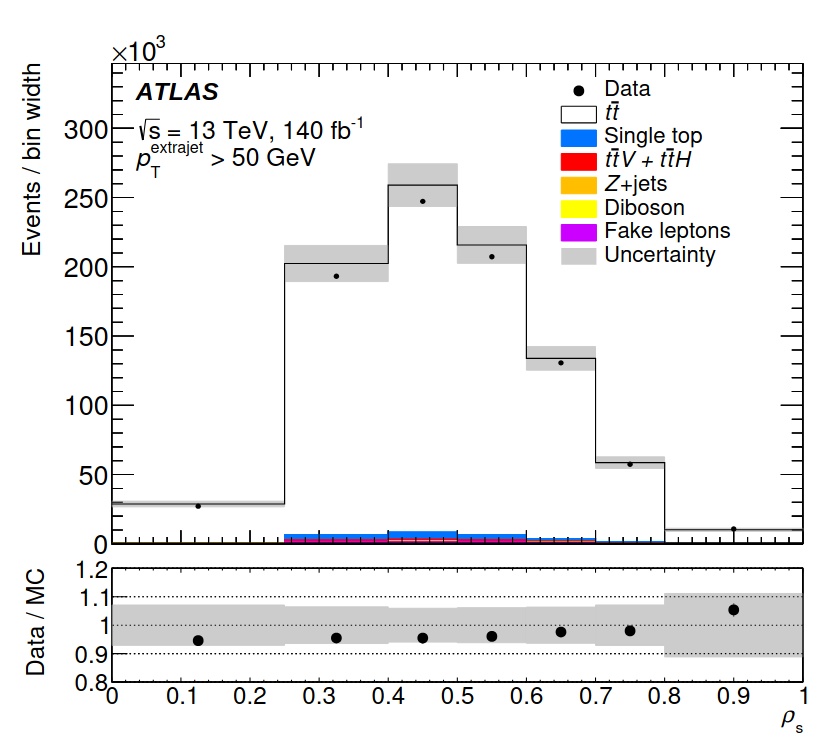Measurement of the top-quark pole mass in dileptonic tt+1-jet events at sqrt(s)=13 TeV with the ATLAS experiment
Measurement of the top-quark pole mass in dileptonic tt +1-jet events at \(\sqrt{s}=13\) TeV with the ATLAS experiment
Authors: ATLAS Collaboration
Abstract: A measurement of the top-quark pole mass \(m_{t}^\text{pole}\) is presented in \(t\bar{t}\) events with an additional jet, \(t\bar{t}+1\text{-jet}\), produced in \(pp\) collisions at \(\sqrt{s}=13\) TeV. The data sample, recorded with the ATLAS experiment during Run 2 of the LHC, corresponds to an integrated luminosity of \(140~\text{fb}^{-1}\). Events with one electron and one muon of opposite electric charge in the final state are selected to measure the \(t\bar{t}+1\text{-jet}\) differential cross-section as a function of the inverse of the invariant mass of the \(t\bar{t}+1\text{-jet}\) system. Iterative Bayesian Unfolding is used to correct the data to enable comparison with fixed-order calculations at next-to-leading-order accuracy in the strong coupling. The process \(pp \to t\bar{t}j\) (\(2 \rightarrow 3\)), where top quarks are taken as stable particles, and the process \(pp \to b\bar{b}l^+\nu l^- \bar{\nu} j\) (\(2 \to 7\)), which includes top-quark decays to the dilepton final state and off-shell effects, are considered. The top-quark mass is extracted using a \(\chi^2\) fit of the unfolded normalized differential cross-section distribution. The results obtained with the \(2 \to 3\) and \(2 \to 7\) calculations are compatible within theoretical uncertainties, providing an important consistency check. The more precise determination is obtained for the \(2 \to 3\) measurement: \(m_{t}^\text{pole}=170.7\pm0.3~(\text{stat.})\pm1.4~(\text{syst.})~\pm 0.3~(\text{scale})~\pm 0.2~(\text{PDF}\oplus\alpha_\text{S})~\text{GeV},\) which is in good agreement with other top-quark mass results.
References
- arXiv
 Measurement of the top-quark pole mass in dileptonic ttbar + 1-jet events at sqrt(s)=13 TeV with the ATLAS experimentJul 2025
Measurement of the top-quark pole mass in dileptonic ttbar + 1-jet events at sqrt(s)=13 TeV with the ATLAS experimentJul 2025
Enjoy Reading This Article?
Here are some more articles you might like to read next:

